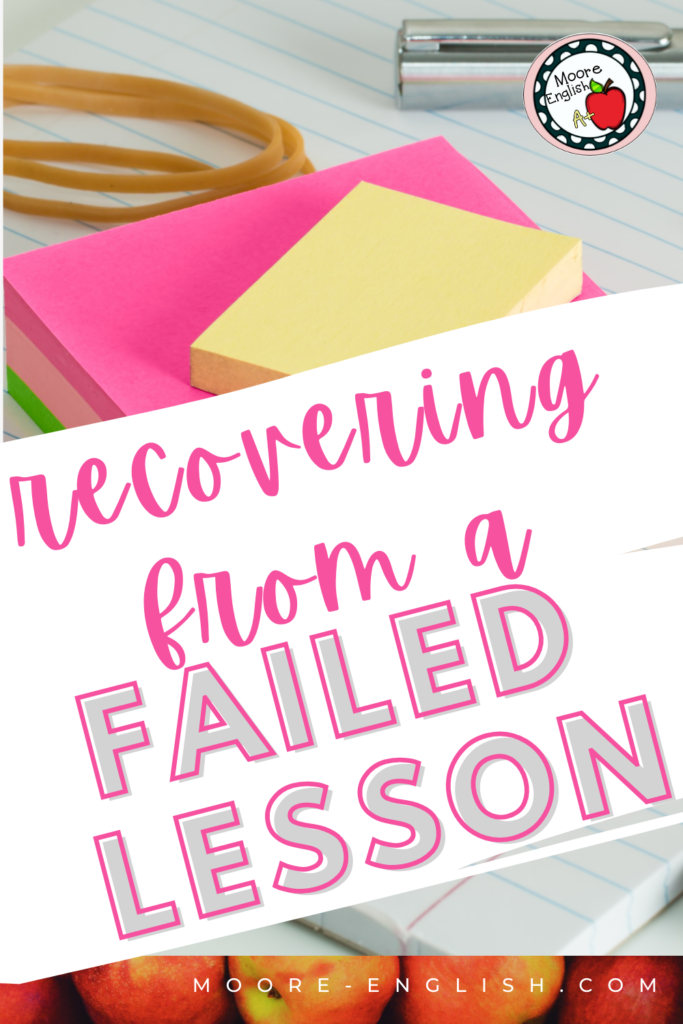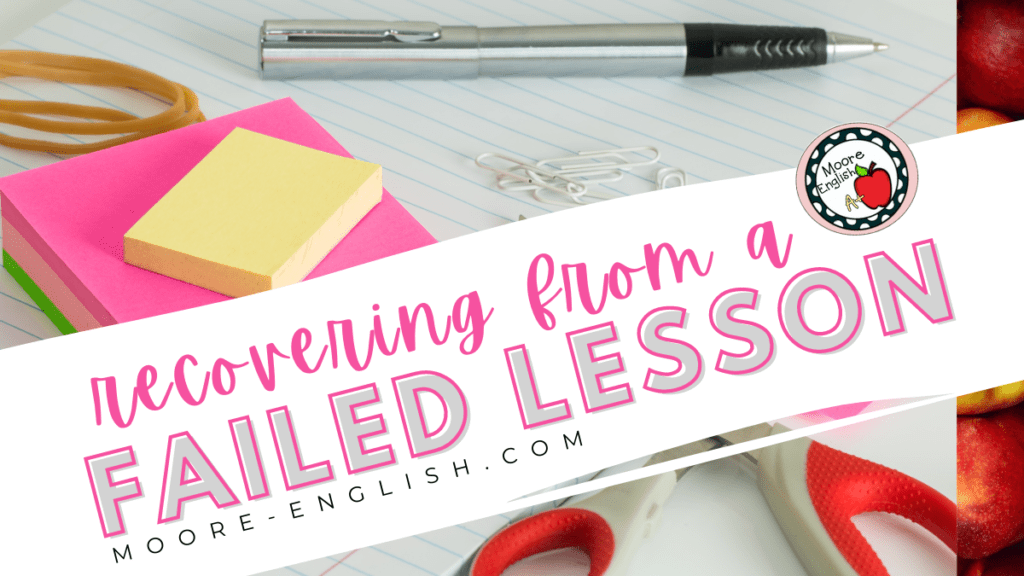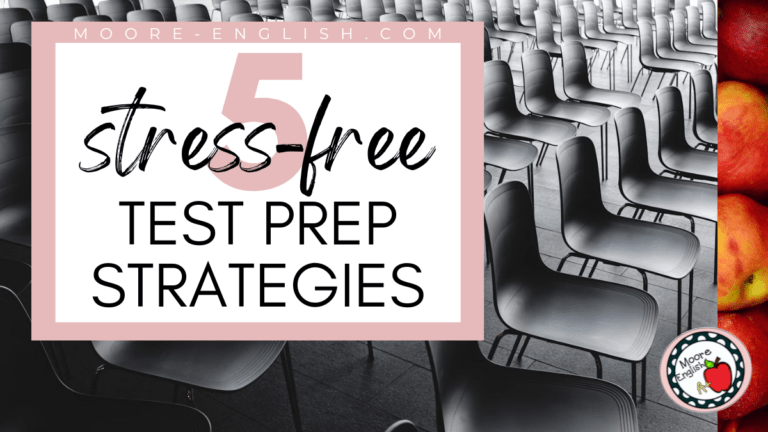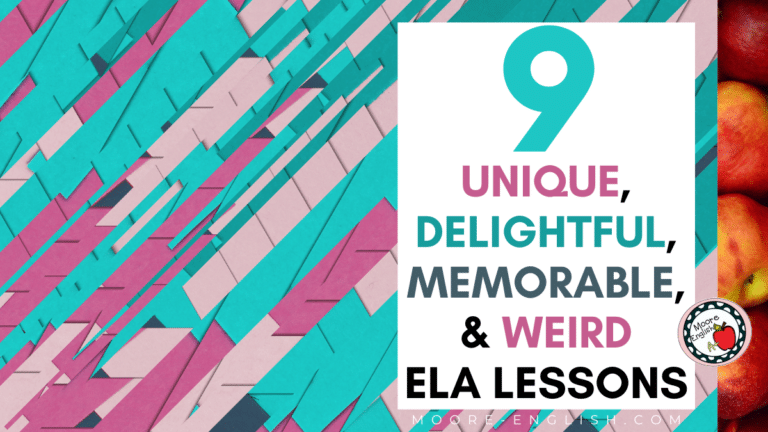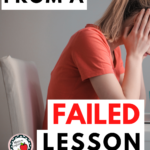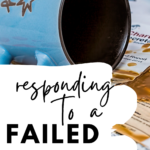One of my favorite lessons of the year is to watch the TED talk “The Danger of a Single Story” with my students. This is a lesson I teach every year, so it’s a pretty well-oiled lesson.
Last year, I decided to teach this lesson earlier in the year than usual. I moved the lesson earlier in the year because my district had switched to distance learning. The lesson is ready-to-use and can expand or contract depending on the schedule and needs of students. It’s also a lesson that students can complete independently as part of distance learning.
In the end, students did the lesson independently, and they enjoyed “The Danger of a Single Story.” They did a pretty good job answering the questions about the Ted talk. However, when students tried to apply the concept of the “single story” to Things Fall Apart, they faltered.
In other words, the lesson failed to meet my expectations. It didn’t go as planned. It didn’t go as well as it had in the past.
While I was disappointed, failed lessons are part of teaching. Changing part of a lesson can affect its efficacy. Sometimes those changes have a huge pay off, and sometimes those changes detract from the lesson. In other cases, a lesson just doesn’t click. All in all, it’s not the failed lesson that defines us. Instead, it’s how we respond to failed lessons that determines our efficacy as teachers and how our students will grow. Check out these strategies for handling failed lessons.
This post this post may contain affiliate links. Please read the Terms of Use.
Types of Failed Lessons
Sometimes lessons flop. That’s a teaching reality, but why a lesson fails can depend on a variety of factors. A lesson may assume too much prior knowledge, may be at the wrong level, may be superseded by something else that’s drawing students’ attention. Similarly, a lesson may work beautifully with first block and flop in second block. A lesson that worked in 2019 might bite it in 2022. Sometimes the technology supporting the lesson fails. In any of these situations, there are a few reactions a teacher can have:
- First, you can recognize the failed lesson and plow through, hoping to salvage something along the way. This is my approach when I don’t key into the failure early enough.
- Second, you can call an audible as soon as you realize something has gone awry. Sometimes making a mid-course adjustment is the right recipe.
- Alternatively, sometimes you know nothing has gone wrong until after the lesson. A lesson can be engaging, students can be focused, and the learning can still be superficial or incorrect.
How Do You Know a Lesson has Failed
As a new teacher, I sometimes struggled to identify when a lesson had flopped. As a more experienced teacher, I have a better sense of when a lesson has failed. In part, this comes from a more robust set of ways to determine a lesson’s efficacy.
- First, student behavior is a clear measure of whether a lesson is engaging. What are students’ postures like? Are students focused on their devices? What actions does the lesson ask students to take?
- Second, formative assessment can reveal if you have a failed lesson. Some formative assessments are as informal as teacher observations of student work and elbow conversations. Other times, formative assessments are more formal like exit tickets and quizzes.
- Similarly, students are always happy to share their opinions. Using a quick Google Form like this one (it’s free) can help teachers assess the success of a lesson. This is also a great way to elicit feedback from students and can inspire future lessons.
- Finally, student self-efficacy and metacognition is a good measure of a lesson’s success. When lessons go well, students emerge with a greater sense of self-efficacy. Additionally, they also provide reflections that evolve based on their developing skills.
How to Respond to a Failed Lesson
When a lesson fails, the most important thing is how you respond. The response is what is going to determine how and what students learn. Consider these options for responding to a failed lesson:
- First, if you called an audible during the failed lesson, the audible is the response. Determine the efficacy of that response with one of the strategies above.
- Second, use student feedback and formative data to determine what the next lesson should be. Should the lesson be whole group reteaching? Small group intervention?
If reteaching is in your future, consider a lesson plan with a different shape. For example, if the first lesson was a lecture, try something more dynamic. If the first lesson was whole group guided reading, try something more personal and individualized. Here are some suggestions:
- Add movement to any lesson by considering classroom stations, gallery walks, or a classroom field trip.
- Ask students to write to explain their thinking. Each time you add a modality to the lesson, students have another opportunity to make a connection with the material.
- Involve students in their learning by incorporating discussion. Students often have greater success making meaning if they can test their thoughts against a peer’s words.
- Personalize lessons with task cards for individual learners. Task cards are a great way to differentiate because teachers can determine which student receives which card. Check out my favorite ELA task cards!
- If you’re still struggling to make a lesson stick, invite another teacher or instructional coach into your classroom. Getting a different perspective on lesson design can be a great way to respond to a failed lesson. While such an ask requires vulnerability, in the long run, this kind of experience leads to professional growth.
In the end, failed lessons are part of teaching. No one pitches a perfect game every day. However, it’s in how we accept, recover, and respond to failed lessons that determine our efficacy as teachers and our students’ future success.

